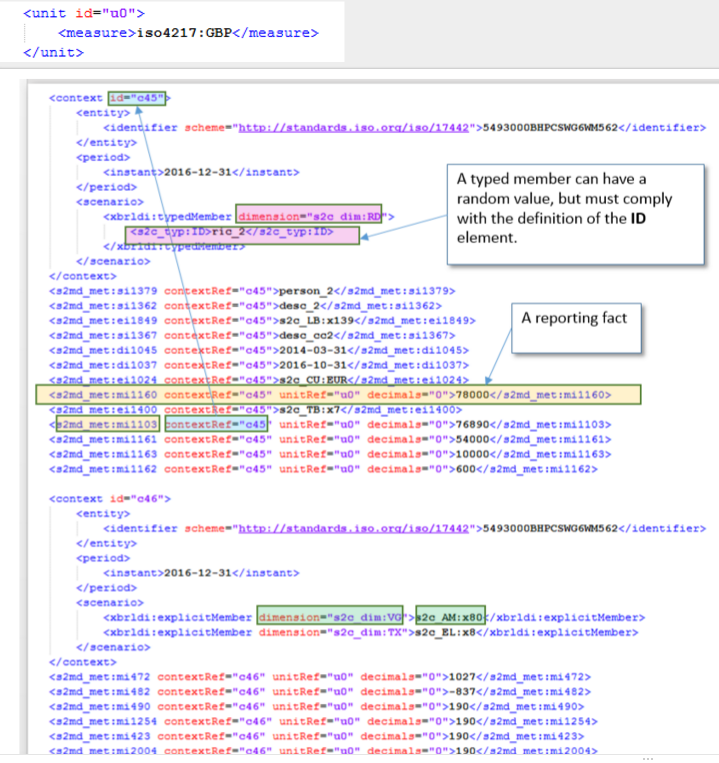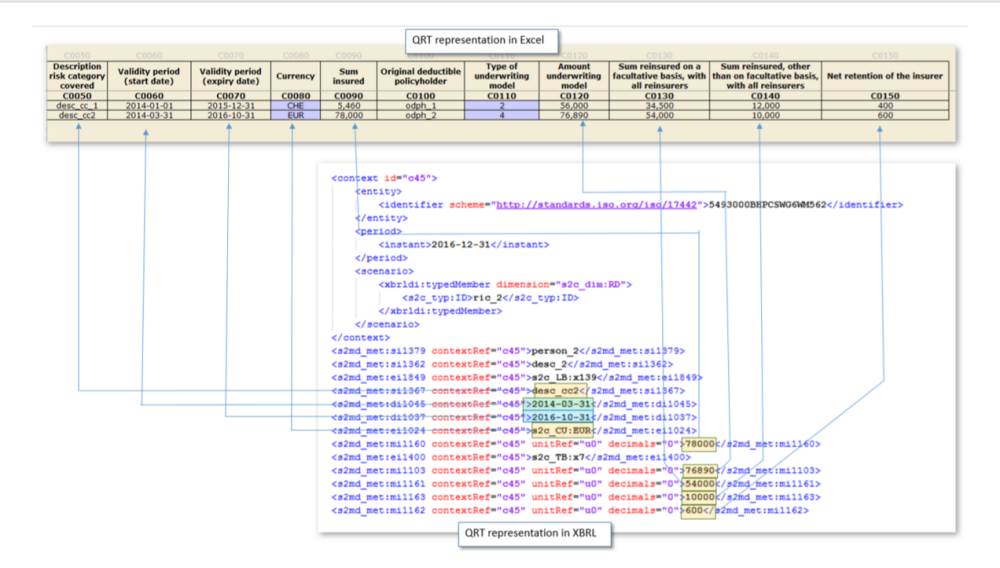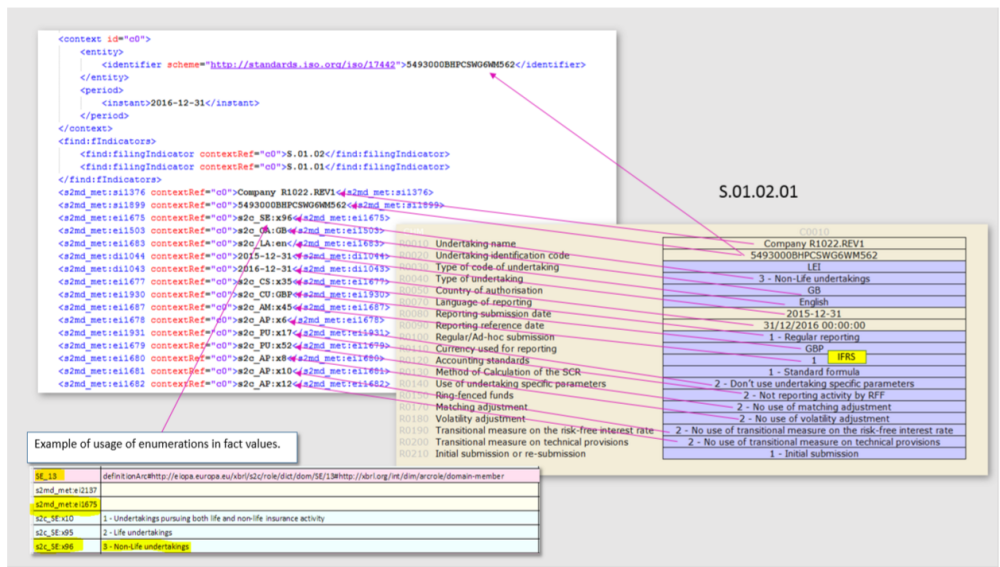An XBRL file is a type of XML file that can be opened in a standard notepad programme (ideally with XML formatting). It is human readable and can be analysed easily without any additional software.
Requirements of an XBRL filename
- An XBRL should always have a file extension .xbrl (in lowercase)
- Some regulators require a specific naming convension of the filename.
Anatomy of an XBRL File
The rest of this section explains the various section of an XBRL file and where you can find the various components. e.g. insurance company name, the value of a data point, reporting period etc.
The first two slides show the basic anatomy of an XBRL document, followed by definitions of the components contained in the document below the two slides.
In the above picture you will see references to the elements in the XBRL document :
Context
(Each context is dynamic and the unique collection of dimensional descriptors for reporting facts).
All facts that require this specific collection of dimensional descriptors will refer to this context via the contextRef property of the reporting fact
Note: order of contexts and order of content within contexts is irrelevant
Entity
Entity is static. Its context includes the entity tag (company identifier)
Period
This is static – every context includes the period tag (return reference date)
Scenario
Considered as dynamic, all other dimensions to describe the reporting fact are stored in the scenario.
Note: A context does need a scenario (i.e. fact may be described by entity and period alone scenario must not be blank if present.
Reporting fact
Dynamic (every data point – which is not part of a list key) will have its reporting fact line except for monetary facts which are 0 or empty in the return.
The reporting fact is the value of the data point.
Reporting concept
Every reporting fact has one and only one concept.
The data points in the return are linked to reporting concepts in Tabular using XML MAP files. A reporting concept can be viewed in the taxonomy the metric name space.
ContextRef
Every reporting fact has to have a ContextRef property
This refers to the specific context for the reporting fact which holds the relevant dimensional descriptors
UnitRef
This refers to a unitref context which defines whether reporting is monetary or non-monetary if numeric
Note: mandatory for numeric facts and must not be present for non-numeric facts
Decimals
This specifies the data precision.The data precision depends on the data type LINK TO MAPPING OF DATA TYPES TO DATA PRECISION IN DOCUMENTATION
Note: mandatory for numeric facts and must not be present for non-numeric facts
The slides below show how a QRT in Excel is represented in XBRL exported file:











Post your comment on this topic.